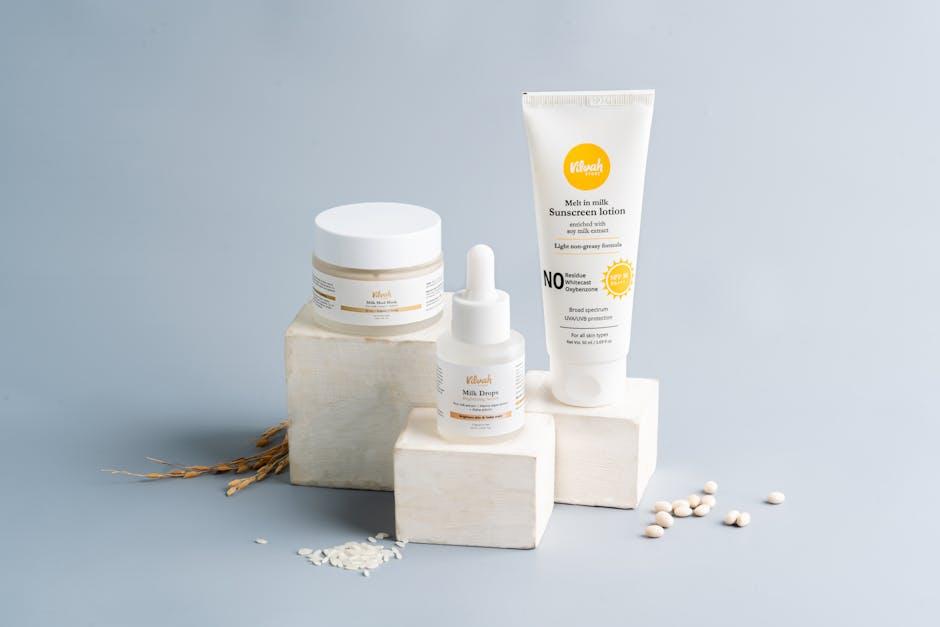In a world where the sun’s rays are both a source of life and a potential adversary, safeguarding our skin has become a year-round commitment. As the seasons shift and the sun arcs differently across the sky, our skin continues its diligent duty, shielding us from the elements. Yet, it needs our help to stand strong against the sun’s persistent glare. Whether it’s the gentle warmth of spring, the blazing intensity of summer, the mellow glow of autumn, or the deceptive coolness of winter, understanding how to protect our skin from the sun is essential for maintaining its health and vitality. This guide will illuminate the path to effective sun protection, ensuring your skin remains a resilient barrier, no matter the time of year.
Understanding UV Rays and Their Impact on Skin Health
UV rays, or ultraviolet rays, are a type of electromagnetic radiation emitted by the sun. They are categorized into three types: UVA, UVB, and UVC. UVA rays penetrate deep into the skin, causing premature aging and contributing to skin cancer risk. UVB rays are responsible for sunburn and play a significant role in developing skin cancers. While UVC rays are mostly absorbed by the Earth’s atmosphere and do not reach the surface, the cumulative effects of UVA and UVB exposure can be harmful.
- UVA Rays: Can penetrate through clouds and glass, leading to long-term skin damage.
- UVB Rays: More intense during summer, but present year-round, causing immediate skin effects like sunburn.
- Skin Health Impact: Both UVA and UVB rays can damage skin cells, leading to aging, sunburn, and increased cancer risk.
Understanding the impact of these rays is crucial for maintaining skin health. Incorporating broad-spectrum sunscreen into your daily routine, even on cloudy days, can provide essential protection. Opt for products with an SPF of 30 or higher, and remember to reapply every two hours, especially if you’re outdoors or engaging in water activities. By taking these proactive steps, you can help mitigate the harmful effects of UV exposure and preserve your skin’s vitality.

Daily Skincare Routine: Sunscreen and Beyond
Incorporating sunscreen into your daily skincare routine is non-negotiable, but protecting your skin from the sun goes beyond just slathering on SPF. Sunscreen is your first line of defense, but layering your protection can make a significant difference. Here are some essential steps to ensure your skin remains shielded from harmful UV rays all year round:
- Choose a broad-spectrum sunscreen: Opt for a sunscreen that offers both UVA and UVB protection. Look for formulas with at least SPF 30 for daily use.
- Reapply throughout the day: Sunscreen is not a one-time application. Make sure to reapply every two hours, especially if you are spending time outdoors.
- Embrace protective clothing: Hats, sunglasses, and lightweight long-sleeved shirts can offer additional protection, reducing your skin’s exposure to the sun.
- Utilize shade wisely: Whenever possible, seek shade during peak sun hours, typically between 10 a.m. and 4 p.m., to minimize direct sun exposure.
- Consider antioxidants: Incorporating products with antioxidants like vitamin C can help combat the free radicals generated by sun exposure, providing an extra layer of defense.
By weaving these practices into your daily regimen, you can create a holistic approach to sun protection that will keep your skin healthy and radiant throughout the year. Remember, consistency is key in maintaining your skin’s youthful glow.

Choosing the Right Sun-Protective Clothing
When selecting clothing to shield your skin from harmful UV rays, consider garments labeled with a high UPF (Ultraviolet Protection Factor). UPF measures how effectively fabric blocks ultraviolet radiation, with higher numbers indicating better protection. Look for materials like tightly woven fabrics, which naturally offer better defense against the sun. Some garments even come treated with UV-inhibiting ingredients for added protection. Prioritize long sleeves, collars, and full-length pants for maximum coverage, and choose darker colors, as they absorb more UV rays than lighter shades.
Consider these features for sun-protective clothing:
- Breathability: Opt for lightweight, breathable fabrics to stay cool while remaining protected.
- Moisture-wicking: These fabrics help keep you dry and comfortable, especially during hot weather.
- Adjustable coverage: Look for items with adjustable hoods, roll-up sleeves, or convertible pants to adapt to changing conditions.
- Durability: High-quality materials ensure long-lasting protection even after multiple washes.
Investing in the right sun-protective clothing can significantly reduce your exposure to harmful UV rays, keeping your skin healthy and safe all year round.

Adapting Sun Protection Strategies for Every Season
As the seasons change, so should your sun protection tactics. Each time of year presents unique challenges and opportunities when it comes to safeguarding your skin. In the vibrant days of spring, when nature blooms with color, consider wearing a lightweight, long-sleeved shirt to shield yourself from the sun’s rays while enjoying outdoor activities. Don’t forget a wide-brimmed hat to provide shade for your face and neck. Spring’s unpredictable weather can still deliver a sunburn, so maintaining these protective measures is crucial.
During the sizzling summer months, when the sun is at its most potent, sunscreen becomes your best ally. Opt for a broad-spectrum sunscreen with an SPF of at least 30 and remember to reapply every two hours, especially if you’re swimming or sweating. As autumn rolls in, the cooler temperatures might trick you into thinking the sun’s effects have lessened, but UV rays remain powerful. Consider incorporating a moisturizer with SPF into your daily routine to protect your skin from incidental exposure. And in winter, when snow reflects the sun’s rays, intensifying their impact, lip balm with SPF becomes essential to protect your lips from chapping and burning. Embrace these seasonal strategies to keep your skin healthy and radiant all year long.






























